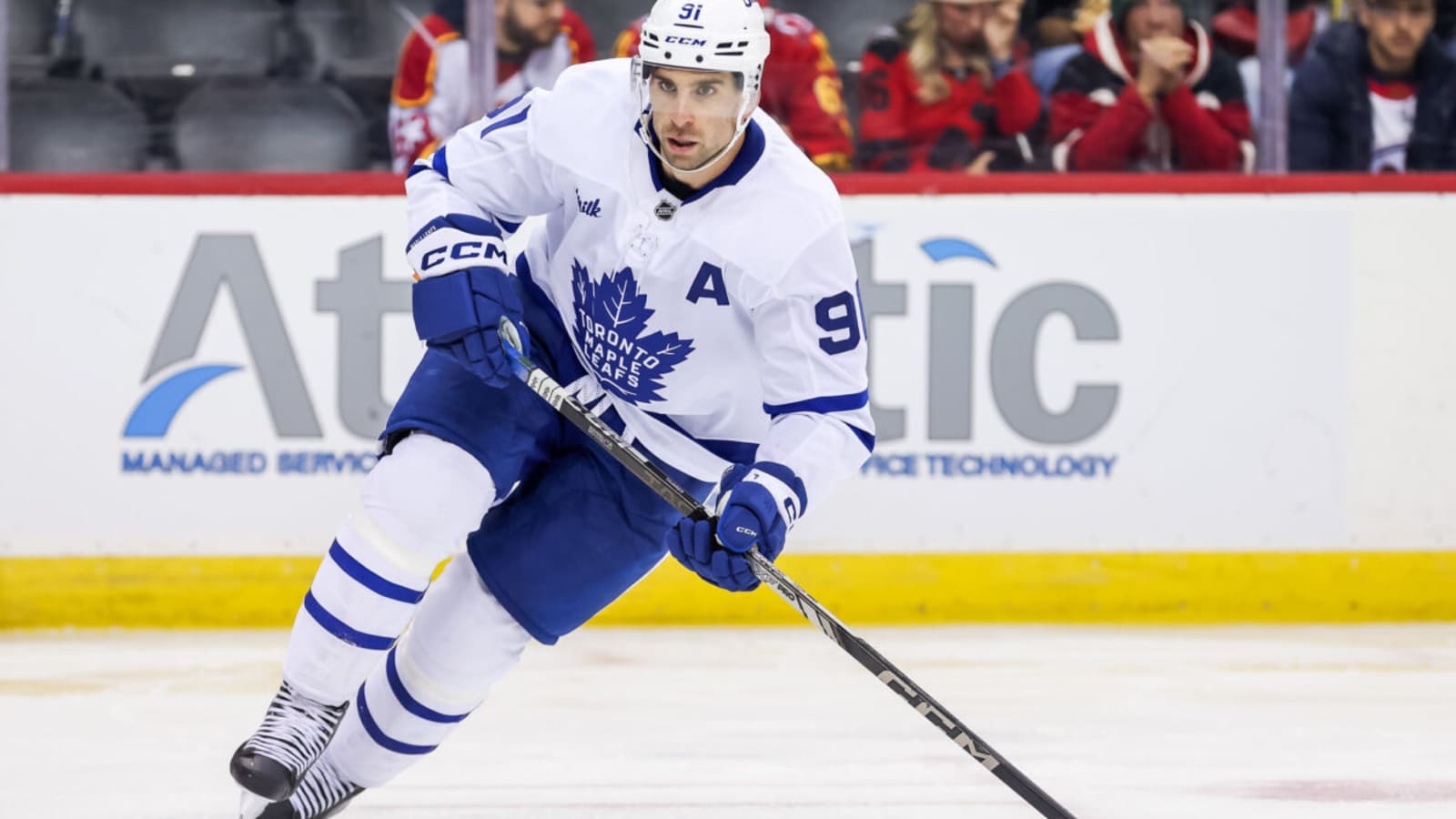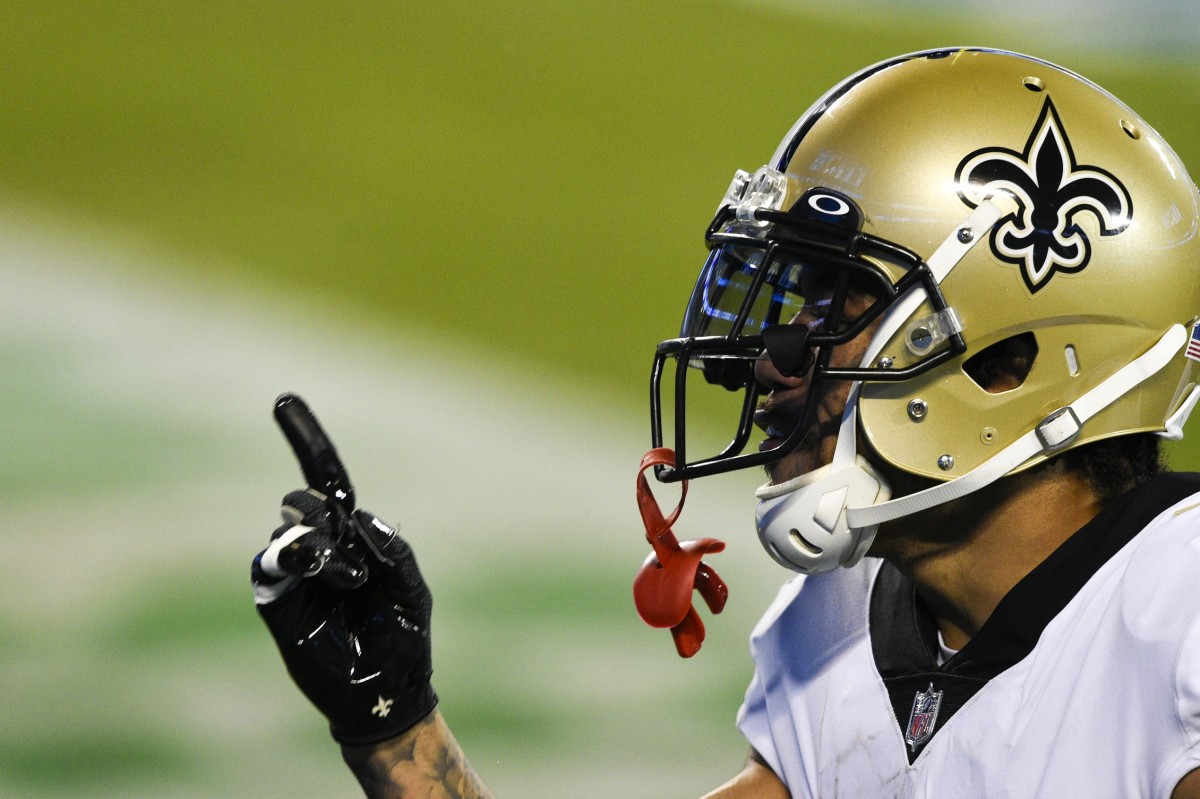
One of the great storylines for the Toronto Maple Leafs this season is the significant increase in John Tavares’ shooting percentage. This season, after 66 games, he’s put in 35 goals (on 175 shots) with 34 assists for 69 points. He’s jumped his career shooting percentage of 13.1% to an even 20%. The math is easy. It means the puck makes it over the line and into the net once out of every five shots Tavares has taken.
These days, in the age of such talented goalies, that kind of shooting percentage is high. Interestingly, the former player who called last night’s game – Craig Simpson – has the highest NHL career shot percentage, at 23.7 percent. Since 2015-16, Andrei Kuzmenko has had the highest career shooting percentage, at 20.5 percent.
For Tavares, this is a noteworthy development. But why? Could it be tied to the fact that he’s no longer carrying the burden of being the team’s captain? The most intriguing possibility is that it might be tied to the system changes under head coach Craig Berube and the team’s overall style of play. Specifically, the shift toward a more north-south, defensively focused strategy could be positively affecting Tavares’ performance in several ways.
The Impact of Berube’s Defensive, North-South Style on Tavares’ Play
Under Berube’s system, which emphasizes a faster, more direct, and defensively responsible approach, the Maple Leafs have shifted toward a style that prioritizes quick transitions, less time spent in the defensive zone, and more controlled offensive zone pressure. This type of play often results in a more compact, tighter game with lower-scoring totals overall.
On his first goal of last night against the Los Angeles Kings, Tavares showed his ability to thrive in high-danger areas near the crease and around the net. An Auston Matthews rebound came to him as he headed to the net. Quicker than a wink, he put the puck into the net. On last night’s second goal, with the Kings pushing to tie the score as the clock ran out, he broke out, got a great feed from Mitch Marner, and won a quick tussle with Anze Kopitar, for the puck to deposit into an open net.
Players like Tavares use their high hockey IQ to read the game and get to the right place at the right time. He also excels in close-quarter situations, using his quick release and accuracy to score in high-percentage areas. Berube’s tactical adjustments could have unlocked new opportunities for him to capitalize on.
There are several reasons why Tavares might benefit from these changes. These include:
Reason 1: Tavares Gets More High-Quality Scoring Chances in Tight Spaces
A defensive-minded, north-south style of play often limits the time spent in the offensive zone, leading to more rapid offensive zone entries and quicker shots on net. With fewer prolonged shifts and more direct play, Tavares might find himself in more prime positions to score, as quick transitions often lead to odd-man rushes or chaotic plays around the crease.

This kind of play suits Tavares well. His increased shooting percentage could reflect more efficient shot selection and consistent chances to score from in-tight.
Reason 2: The Opposition Has Less Time to Defend Tavares
Teams spend less time in the offensive zone in a more defensive, structured system. That means the opposing defense and goaltenders are under pressure to react quickly. When the Maple Leafs transition quickly from defense to offense, Tavares—especially with his hockey IQ—can exploit the opposition’s brief lapses in coverage.
Whether it’s getting open for a quick shot off a pass or being in the right place for a rebound, this faster-paced system gives Tavares more chances in the critical areas of the ice. As a result, it leads to a higher shooting percentage.
Reason 3: Berube’s System Boosts Physical Play and Net-Front Presence
The north-south system emphasizes puck retrieval and net-front battles, where Tavares excels. By engaging more physically around the net, whether to win battles for loose pucks or to create space for his teammates, he can find himself in positions where he’s more likely to score on deflections or second-chance opportunities.
This system could result in his increased physicality, evidenced by his average of 1.24 hits per game this season. Over his career, he’s averaged about 22 hits per season. This season, he’s already topped 80 hits. Berube’s system values players who can assert themselves in the dirty areas of the ice. Tavares’ added presence in those areas would naturally translate to better scoring chances and a higher shooting percentage.
Reason 4: Tavares’ Reduced Defensive Responsibility Allows More Offensive Freedom
With a more defensive structure, players are often expected to focus on their end first and foremost. However, in Berube’s system, Tavares’s more defined responsibilities allow him to focus on his offensive strengths without being overburdened with defensive duties.
When the team plays more conservatively and focuses on structured defensive play, Tavares has more freedom to pick his spots offensively. This allows him to be in the right position at the right time to capitalize on opportunities, particularly around the net. He can be more opportunistic with fewer defensive responsibilities, taking advantage of high-quality chances when they arise.
Reason 5: Fewer Shot Attempts, More Efficient Shooting
While Tavares is taking fewer shots this season, his shots are more likely to result in goals. This speaks to his ability to adapt to the system. In a more defense-oriented game, players generally take fewer risks. Ergo, focusing more on shot quality than quantity is key.
Tavares has always been a skilled goal-scorer and adjusted his shot selection to align with the team’s approach. Instead of firing from low-percentage areas or forcing a shot in tight situations, he’s likely taking more controlled, high-danger shots with a better chance of beating goaltenders.
The Bottom Line: Tavares Is Thriving in Berube’s System
The bottom line is that Tavares has adapted remarkably well to Berube’s more defensive, north-south style of play. He’s taken advantage of faster transitions and a more structured game. While this approach has reduced overall goal-scoring chances for many players, it has benefitted Tavares by giving him higher-quality chances in critical scoring areas.
Tavares’ increased physicality, selective shot-taking, and ability to exploit the opposition’s weaknesses significantly boosted his shooting percentage. Why has Tavares lifted his game in this system? Two things seem apparent. First, his high hockey IQ helps him read the game better. Second, he’s the very definition of adaptability. These two attributes have allowed him to maintain his offensive effectiveness, proving he can thrive even when the dynamics of his team change.
An Invitation for Readers to Study the Images in This Post
While the photos accompanying this post might seem just a visual element, they reveal something more profound about Tavares’s game—his extraordinary focus. Tavares’ eyes tell the story in each image, whether he’s handling the puck in practice or concentrating during live gameplay. His intense concentration and ability to read the game around him are evident, showing his awareness and high hockey IQ.
These photos, skillfully captured by The Hockey Writers‘ talented photographers, Amy Irvin and Jess Starr, do more than just document moments—they highlight the mental edge that sets Tavares apart. As a personal shout-out, Irvin and Starr consistently create remarkable images that offer readers a deeper connection to the game and its players. In this case, they perfectly capture the essence of Tavares’ focus. Thanks, Amy and Jess.

-1750078981-q80.webp)
-1748272494-q80.webp)
-1745114873-q80.webp)